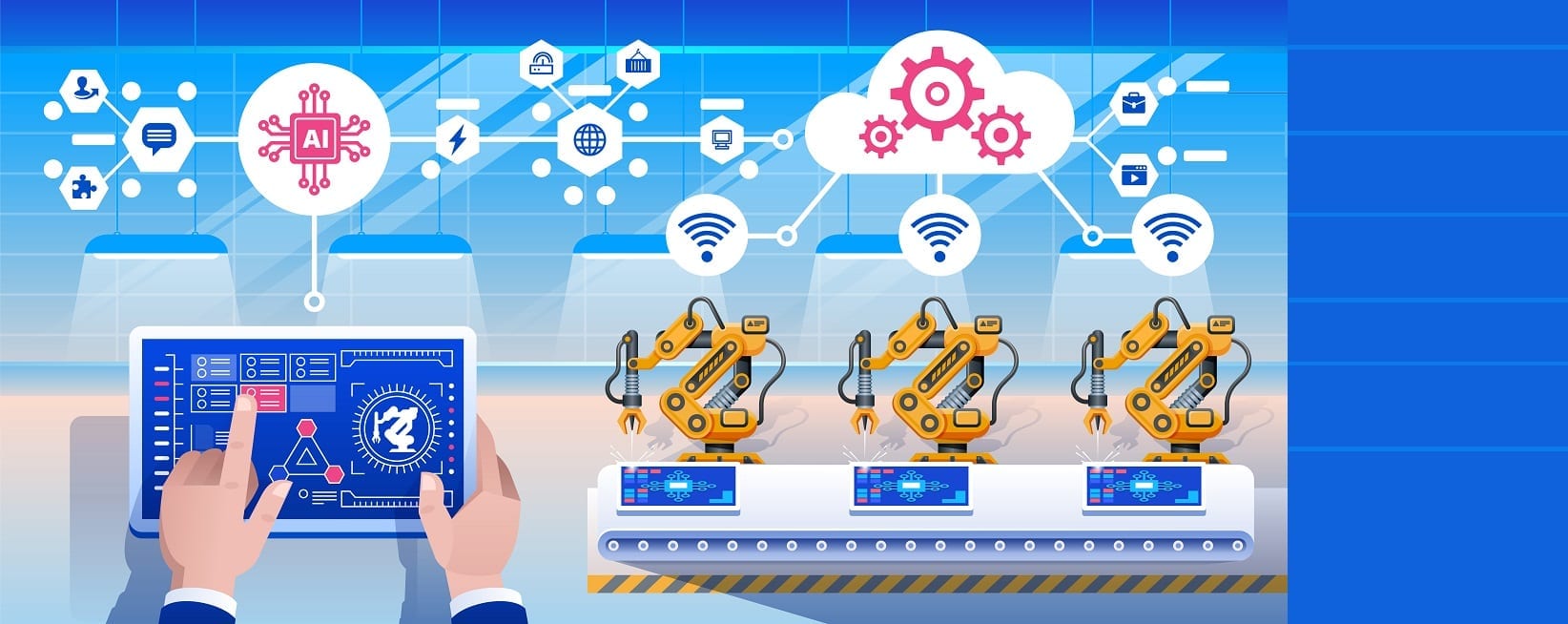
In the age of the Industrial Internet of Things, manufacturing is one of several industries set to benefit from the advent of new and cutting edge smart devices. These technologies currently have various role within manufacturing and have also enhanced existing operations such as maintain equipment and machinery with the advent of predictive maintenance systems.
However, with more and more connected devices sending data across networks to the cloud or data center, the main challenge for many manufacturers has been to be able analyse the increasing amounts of data.
With IoT devices and sensors becoming increasingly widespread throughout the manufacturing world, the need for intelligent data analysis became apparent. There could be thousands of devices and sensors located within manufacturing facilities and most of the sensors present will be required to generate potentially thousands of readings throughout a single day.
This generates a vast amount of data that would have to be sent to either the cloud or a data center and may very well use up the entire network’s bandwidth. However, by pushing intelligence closer to the network edge, much of the data generated by connected devices could be analyzed on-site with only what’s needed sent on to the cloud or data center.
Edge Computing
The idea of pushing intelligence closer to the network edge revolves around analyzing the data generated by devices and equipment through edge devices, which then process this data and send the results of this processing on to the cloud or data center where it can be turned into actionable information and insights. One of the ways in which edge computing is beginning to revolutionize the Internet of Things is by driving the adoption of connected devices.
Enabling the addition of several hundred IoT devices and sensors to a manufacturing facility with the knowledge that the data produced by them won’t use up your entire network’s bandwidth makes edge devices an attractive prospect to many manufacturers. Keeping the amount of data transferred to the cloud to a minimum can also help to keep cloud storage costs down.
A lot of manufacturing doesn’t occur in the middle of cities and highly-connected areas, with most occurring in somewhat remote locations. This can often affect the availability of internet and cloud services and makes performing data processing in the cloud very difficult.
However, edge computing allows data analytics and processing to be performed on-site without the need for an internet connection and thus also including remotely located manufacturers in the Fourth Industrial Revolution.
Three considerations for those looking to make the transition to edge computing systems would be;
Centralized Management
When using edge devices, configuration changes and updates will need to be made in order to ensure these devices are working optimally. Ideally all the edge devices need to have a centralized management to enable these configurations to be made from one place.
Interoperability
It is also worth considering how all of your additional technologies will interact with each other. If only certain devices will talk to each other, this can create further issues that exacerbate rather than enhance dysfunctional edge computing systems.
Security Updates
To ensure their security in the years to come, more and more connected IoT and edge devices are being secured by OEMs and service providers through regular security updates. It’s always worth considering how your edge devices will be secured and what their update schedules are.
Predictive Maintenance
Many connected devices are utilized within manufacturing with the aim of increasing productivity and enhancing operations, in order for all of this technology to work together efficiently, it needs to be maintained and performing at its optimal level.
This where predictive maintenance becomes essential; by keeping the equipment, tools and machinery used within manufacturing functional and operable using the insights produced through analyzing the data generated by IoT devices and sensors.
Three of the biggest benefits of predictive maintenance within manufacturing include;
1-Reduce Downtime
By scheduling maintenance when equipment, tools or machinery fall within need of repair, manufacturers can reduce both the time their equipment stays out of action for and how many delays are caused by unexpected repairs.
2-Improve Equipment Efficiency
Rather than waiting until machinery fails or equipment and tools break or malfunction, a continuous schedule of planned downtime can help to keep equipment and machinery working more efficiently.
3-Reduce Maintenance Costs
If equipment and tools are maintained regularly in scheduled downtime, the amount of maintenance needing to be done to them will be reduced and overall costs will decrease through the need for less drastic maintenance outgoings such as unexpected repairs, replacements or overhauls.
The straight forward addition of multiple sensors and connected devices to a network alongside the ability to process and analyse the data produced by them on-site makes edge computing an ideal companion for predictive maintenance within the manufacturing industry.
Smart Manufacturing
Smart manufacturing is generally defined as an area of manufacturing focused on optimizing the manufacturing process from concept generation, through production and manufacturing, to product transaction. Predictive maintenance is a key element for manufacturers looking to get on-board with smart manufacturing and will no doubt become an integral part of the transition towards more intelligent operations.
Edge computing looks poised to be the technology enabling such applications of IoT and connected devices to function and with more other cutting-edge technologies such as artificial intelligence and advanced automation systems also currently being developed, it seems likely it will be sooner rather than later that we see these too integrated to create more advanced edge computing systems.
As we move further into this new era of technological innovation and disruption, predictive maintenance looks set to continue to rely on edge computing to enable it to provide ever more advanced services to ensure the optimal performance and operable of all manufacturing tools, equipment and machinery serviced.






